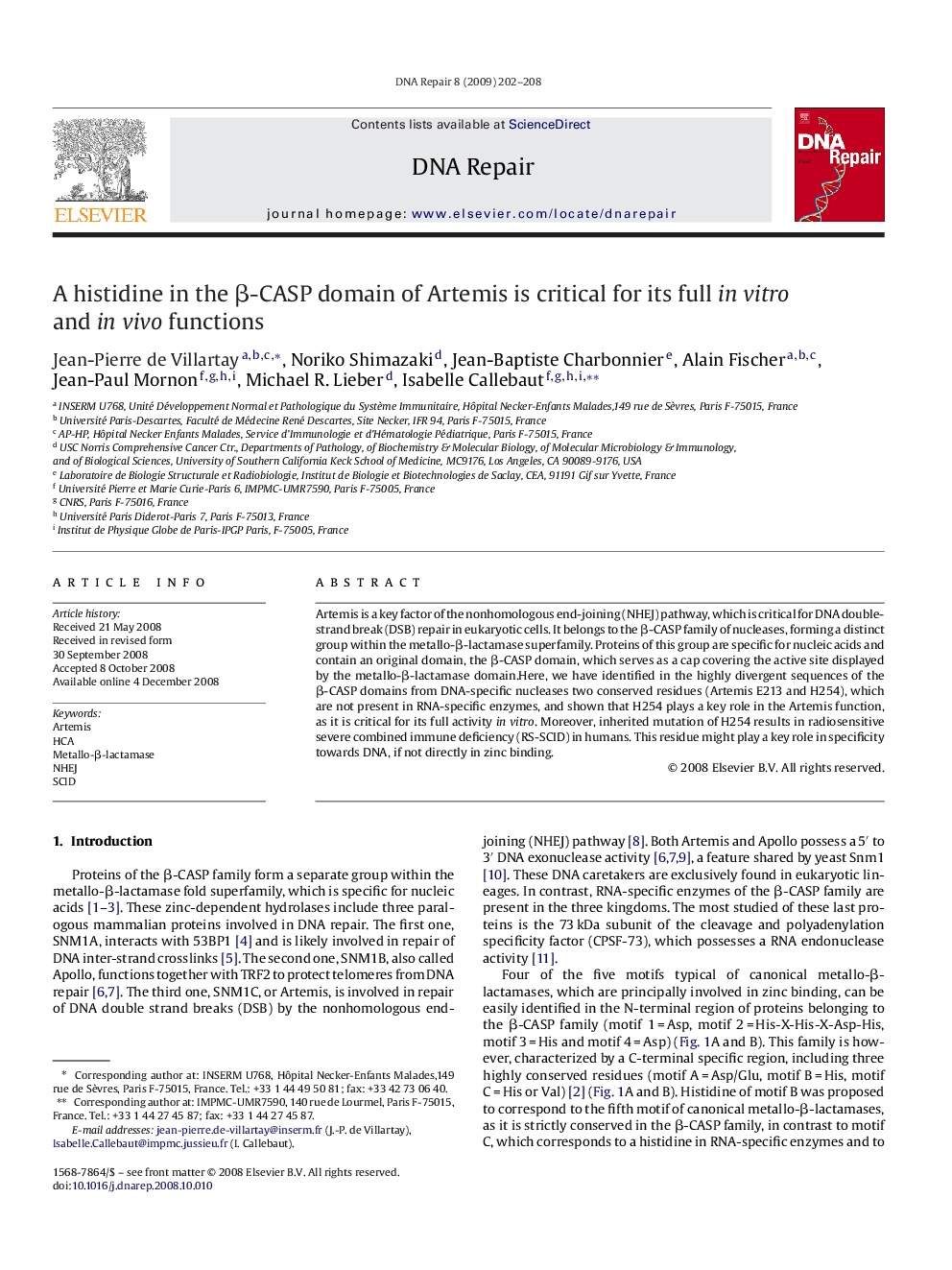| Article ID | Journal | Published Year | Pages | File Type |
|---|---|---|---|---|
| 1980755 | DNA Repair | 2009 | 7 Pages |
Abstract
Artemis is a key factor of the nonhomologous end-joining (NHEJ) pathway, which is critical for DNA double-strand break (DSB) repair in eukaryotic cells. It belongs to the β-CASP family of nucleases, forming a distinct group within the metallo-β-lactamase superfamily. Proteins of this group are specific for nucleic acids and contain an original domain, the β-CASP domain, which serves as a cap covering the active site displayed by the metallo-β-lactamase domain.Here, we have identified in the highly divergent sequences of the β-CASP domains from DNA-specific nucleases two conserved residues (Artemis E213 and H254), which are not present in RNA-specific enzymes, and shown that H254 plays a key role in the Artemis function, as it is critical for its full activity in vitro. Moreover, inherited mutation of H254 results in radiosensitive severe combined immune deficiency (RS-SCID) in humans. This residue might play a key role in specificity towards DNA, if not directly in zinc binding.
Related Topics
Life Sciences
Biochemistry, Genetics and Molecular Biology
Biochemistry
Authors
Jean-Pierre de Villartay, Noriko Shimazaki, Jean-Baptiste Charbonnier, Alain Fischer, Jean-Paul Mornon, Michael R. Lieber, Isabelle Callebaut,
